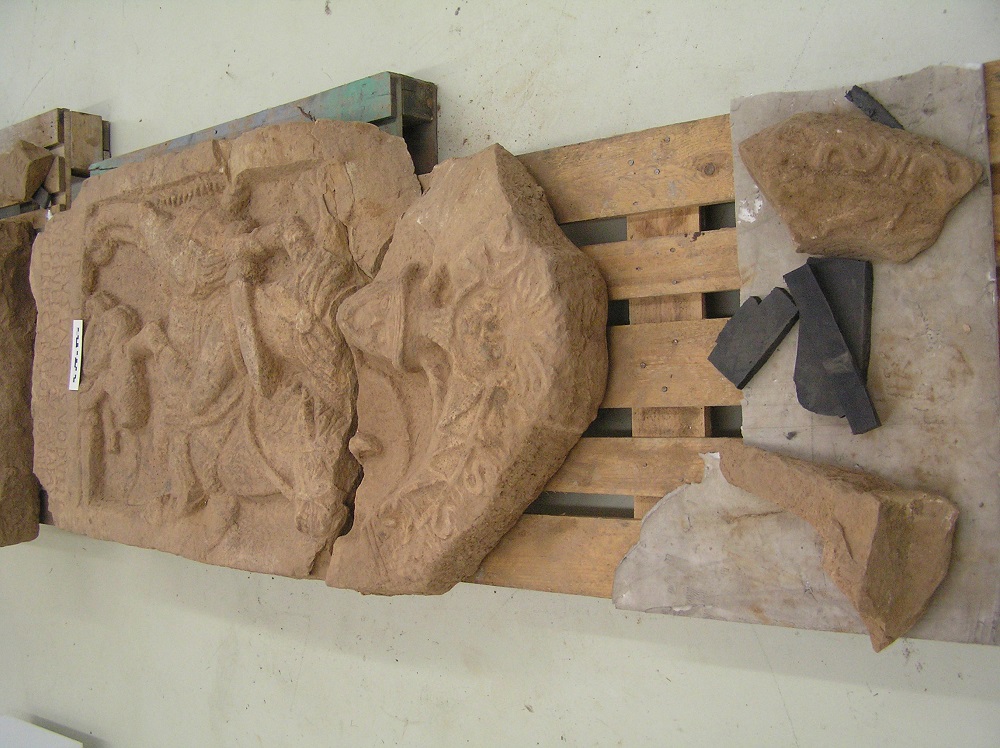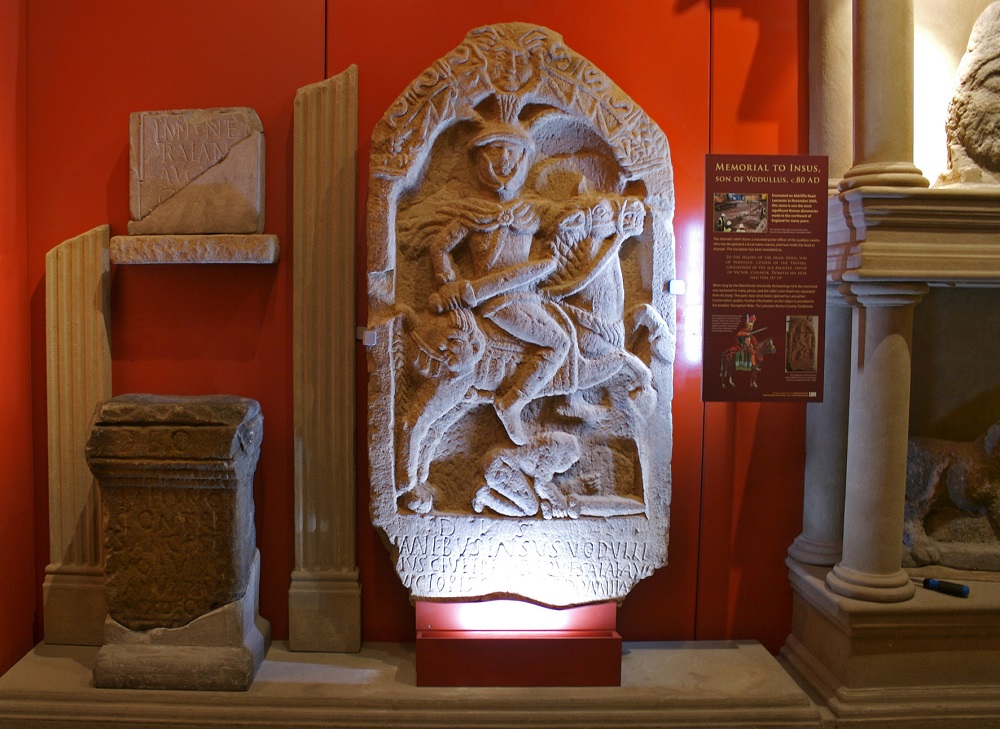Author: Dr James C. Ford, Lancashire County Council.
Lancashire County Council Museum Service collects and curates a range of Roman objects collected from around Lancashire, from local donations, in archives from archaeological excavations undertaken across the county, and with the Portable Antiquities Scheme. The Council also administers the archaeological site at Ribchester, where there is a 1st-4th century AD Roman fort and bathhouse. This week’s blog is the final of a series about the Conservation, the Interpretation, and now the Discovery and Display of the Lancaster Roman Cavalry Tombstone.
The Lancaster Roman Cavalry tombstone from c.100AD was discovered by the Greater Manchester Archaeology Unit on 3rd Nov 2005, during a supposedly routine watching brief for a proposed development on Aldcliffe Road, Lancaster. Watching briefs are one of the most important ways of protecting archaeology in the UK: an archaeologist investigates and monitors the site of a proposed development, to record and where possible preserve archaeological deposits found before or during the development.

Photographed by Peter Iles.
At Aldcliffe road, on the 3rd November 2005, an excavator struck a large block of sandstone lying in what appeared to be a ditch along the Roman road to Lancaster. Construction in the area was halted to investigate this find and the block was flipped, which revealed the carving, still with visible red paint or dye even before cleaning. It was photographed in situ. Photographs at this stage are crucial for many reasons: they show the object in its original context and can provide a valuable record for reconstruction if it is damaged during the retrieval and moving process.
The archaeologists then brought in the Lancashire Museums team to work with the County Archaeologist and the dig director. The team then drew up a strategy to move the tombstone considering many factors, from personnel safety, through object protection, cost, practicality, and the availability of different machinery.

Photographed by Peter Iles.
No on-site cleaning took place because of the paint found on the tombstone, but it did get wet. It is normal for archaeologists to lightly pour water over objects in the ground when they uncover them, as it is relatively safe and simple and can make it much easier to read features. In this case, rain did the job for them.
A method was developed: using an excavator and lifting gear with a sling, the tombstone was mounted on a pallet, then keeping it low on the ground it was transferred on to the tail lift of a van and then taken to Lancashire Conservation Studios. The main slab of sandstone was only about two thirds of the original tombstone but other fragments were found such as a larger worked piece that may have been part of the base and a separate half-moon shaped stone of a Roman cavalryman’s head from another tombstone.

Photographed by Peter Iles.
These fragments were located with a fingertip search within about a yard of the original find, including under some nearby low walls. At some point after the stone was deposited (perhaps in the 18th century), the site had been largely cleared for a later development, one wall of which clipped the corner of where the original stone had fallen. Luckily the stone had been left in place by the builders of this wall, presumably because of its weight and size.

No grave was found on site, so strictly the tombstone is a memorial rather than a grave- or tomb-stone, but the name has stuck.
Back at Lancashire Conservation Studios the tombstone went through a lengthy process of conservation, during which time it was intensively studied, which we have written about in earlier articles. Finally, it could go on display.

Displaying an object correctly is an art in itself. In this case, the Lancaster Roman Tombstone was put on display at Lancaster City Museum. In this case, Lancaster Museum was and continues to be the most appropriate location for this object to be displayed: it is the local museum to the find location.
Lancaster City Museum also exhibit a large collection of local Roman material. The tombstone was to be exhibited as part of a new Roman gallery constructed to contextualise the tombstone, with objects that show the daily life and roles of a Roman in Lancaster, from birth to death. One of the most effective and respectful ways to exhibit an object is to show how it relates to other objects, and how it featured in the society in which it was constructed and used.

In the article about interpretation, we argued that one of the most important aspects of the tombstone was in its depiction of clothing. It is crucial that museums communicate this kind of original research in their displays. While information panels are and will continue to be crucial, there are more innovative methods of communicating information. The gallery at Lancaster City Museum was designed to include an interactive exhibit, in which children could dress a Roman soldier. This was designed to get visitors thinking about one of the more interesting aspects of the object.

